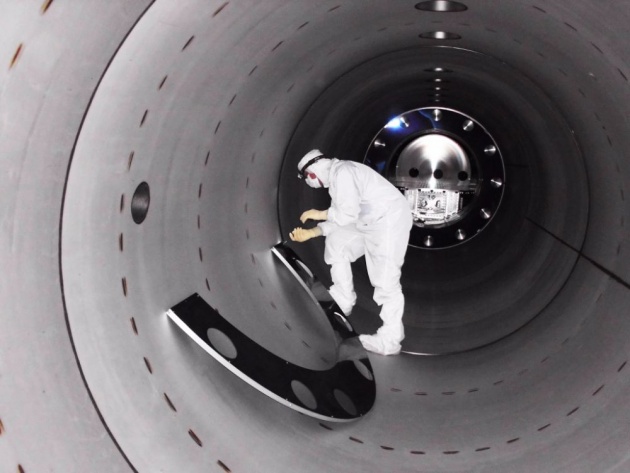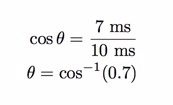LIGO Ain’t a Gravitational Wave Detector—It’s an Observatory

LIGO DETECTED GRAVITATIONAL waves created from the collision between two black holes. The detection was awesome, but let’s look at the name of the detector for a second: Laser Interferometer Gravitational wave Observatory (maybe I should call it LIGWO). LIGO is first and foremost an observatory. It’s a type of telescope that uses gravitational waves instead of electromagnetic waves. I’ve already gone over the methods LIGO uses to determine the distance to the black hole collision, but how do they determine the direction of the event?
It’s important to remember that if you detect a gravitational wave and know the source of the wave, you might be able to observe the event with an electromagnetic (x-ray, radio wave, visible) telescope. That would really be impressive.
Two Detectors and Two Times
There are two LIGO detectors. One is in Louisiana (only 30 minutes from where I live) and the other is in Washington. Other gravitational wave detectors exist on Earth, but they were not operational at the time LIGO measured a signal. There are two huge reasons to have more than one detector:
With two detectors you can check to make sure they both have a signal. This can eliminate the possibility that something local caused a vibration that looks like a gravitational wave.
Using the difference in times for the two detectors, you can get an idea of what direction the gravitational wave came from.
But how does the time difference work? Let’s start with a diagram. This shows the location of the Livingston, LA and Hanford, WA detectors (approximately).

Looking at this diagram, there are two important things. First, there is the yellow line that passes through both detectors. Second, the white lines represent the path of the wavefront of a gravitational wave. Since gravitational waves travel at the speed of light, this particular wave hits the Livingston detector and then the Hanford detector. I added a dotted line to show the extra distance one of the waves has to travel to get to Hanford.
Here’s what we know about these waves. If a gravitational wave traveled along the yellow line and went through Livingston and then on to Hanford, the difference in time would be 10 ms due to the distance between these two location. The measured time difference for the detected gravitational wave was about 7 ms. Since light travels at a constant speed, there is a direct relationship between time and distance (that’s also why we can measure distances in light years).
Based on these two times (the wave time difference and the time difference between the two detectors), I can find the incident angle of the incoming gravitational wave. Let me focus just on the triangle created in the above diagram.
Since this forms a right-triangle and I know two of the sides, I can find the angle θ as:

And that’s it. I know the angle of incidence for this gravitational wave—or do I? Actually, I just found one possible location. If the gravitational wave came in from the bottom of the diagram, I would have a flipped triangle but the exact same solution. Really, if you consider that space is three-dimensional, there are an infinite number of points that would give this time difference—however, those points are confined to a ring where the angle to this ring is the same θ. Maybe that’s difficult to picture in your head so I will make a 3-D model of this ring.
Narrowing Down Further
Just know that the gravitational wave came from some ring isn’t that useful. There would be little chance that a telescope could find the event by scanning over such a large area. Perhaps the best way to decrease the search area would be to use a third (or even fourth) gravitational wave detector. If I added another detector, I would actually get two more rings like the one above. The intersection of these rings would then show the location of the source.
With just two detectors, you need to use some other tricks. Honestly, I don’t fully understand the analysis that LIGO uses (official details here) but that won’t stop me from attempting an explanation.



